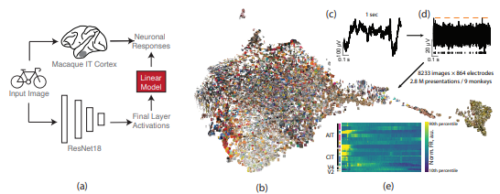2025-01-07 ミュンヘン大学
<関連情報>
- https://www.lmu.de/en/newsroom/news-overview/news/tuberculosis-research-promising-new-active-agent.html
- https://www.thelancet.com/journals/lanmic/article/PIIS2666-5247(24)00205-2/fulltext
南アフリカにおける抗結核薬候補BTZ-043の安全性、殺菌活性、薬物動態(PanACEA-BTZ-043-02):非盲検、用量拡大、無作為化、対照、第1b/2a相試験 Safety, bactericidal activity, and pharmacokinetics of the antituberculosis drug candidate BTZ-043 in South Africa (PanACEA-BTZ-043–02): an open-label, dose-expansion, randomised, controlled, phase 1b/2a trial
Norbert Heinrich, MD PhD∙ Veronique de Jager, MBChB∙ Julia Dreisbach, DVM∙ Petra Gross-Demel, PhD∙ Susanne Schultz, MD∙ Sina Gerbach, PhD∙ et al.
The Lancet Microbe Published: January 7, 2025
DOI:https://doi.org/10.1016/j.lanmic.2024.07.015

Summary
Background
The broad use of bedaquiline and pretomanid as the mainstay of new regimens to combat tuberculosis is a risk due to increasing bedaquiline resistance. We aimed to assess the safety, bactericidal activity, and pharmacokinetics of BTZ-043, a first-in-class DprE1 inhibitor with strong bactericidal activity in murine models.
Methods
This open-label, dose-expansion, randomised, controlled, phase 1b/2a trial was conducted in two specialised tuberculosis sites in Cape Town, South Africa. Adults aged 18–64 years with newly diagnosed pulmonary tuberculosis sensitive to rifampicin and isoniazid, who weighed at least 40 kg, had a positive sputum smear graded at least 1+, were HIV negative, and had no history of hypertension or other substantial comorbidities were admitted to hospital. In stage 1 (multiple-ascending dose phase 1b with an adaptive continual reassessment method), the starting dose of BTZ-043 was 250 mg, with planned dose increments of 250 mg up to 2000 mg, and cohorts of three participants were enrolled sequentially. In stage 2 (phase 2a dose-expansion stage), participants were randomly assigned (3:3:3:2) to receive one of three doses of oral BTZ-043 (decided after stage 1) or standard of care (isoniazid, rifampicin, pyrazinamide, and ethambutol) using sealed opaque envelopes. The BTZ-043 groups also received oral dolutegravir (a third of participants) or a probe drug cocktail (caffeine [probe for CYP1A2], tolbutamide [CYP2C9], dextromethorphan [CYP2D6], midazolam [CYP3A4], and digoxin [P-glycoprotein]; two-thirds of participants). Study staff and participants were not masked, but laboratory staff were masked to treatment assignment. The primary outcome was to assess the safety and tolerability of BTZ-43 over 14 days of dosing by evaluation of adverse events in the safety analysis population. Secondary outcomes were bactericidal activity, measured by time to positivity (TTP) and colony-forming unit (CFU) count; pharmacokinetics (stage 2; including the food effect on BTZ-043); and drug–drug interactions with CYP450 enzymes, P-glycoprotein, and dolutegravir. This study is registered with ClinicalTrials.gov, NCT04044001 (completed).
Findings
In stage 1, 61 patients were assessed for eligibility and 24 were enrolled into seven dose cohorts between Nov 13, 2019, and Aug 13, 2020. Dose escalations were performed safely up to 1750 mg of BTZ-043 with three participants per dose cohort (and two dose cohorts for the highest dose). In stage 2, 151 patients were assessed for eligibility and 54 were enrolled and randomly assigned between Feb 2, 2021, and Feb 9, 2022, to receive 250, 500, and 1000 mg of BTZ-043 or standard of care. 66 (85%) of 78 participants were male and 12 (15%) were female. The most frequently observed adverse events were nausea (12 [8%] of 154), headache (11 [7%]), dizziness (11 [7%]), and vomiting (eight [5%]). Most participants had adverse events of mild (46 [60%] of 77 participants) or moderate (22 [29%]) severity. Transient increases in alanine aminotransferase were observed in both stages, which declined again despite continued dosing and were classified as signs of adaptation of hepatic metabolism rather than hepatotoxicity. The worsening of pre-existing anaemia and QTcF interval prolongation in one individual each were rated as possibly related to the study drug. One patient died before the first scheduled dose of BTZ-043 500 mg due to a pulmonary embolism. In stage 1, bactericidal activity measured as CFU counts on solid media was highest at doses 750–1500 mg; in stage 2, all doses of BTZ-043 showed 14-day bactericidal activity, highest at 1000 mg on solid media (log10 CFU/mL per day –0·115 [95% CI –0·162 to –0·069]) and TTP estimates were highest at 500 mg in liquid media (log10 h per day 0·015 [0·010 to 0·019]). BTZ-043 pharmacokinetics showed increased exposure with high-fat food versus fasting (area under the curve [AUC]0–last geometric mean ratio 4·13 [90% CI 1·65 to 10·30] for BTZ-043; 2·99 [1·39 to 6·41] for BTZ-043total [BTZ-043 plus metabolite 2]; and 1·25 [0·66 to 2·39] for metabolite 1). When taken with a standard breakfast, BTZ-043total AUC showed a dose-proportional increase up to 33 200 ng/mL × h (range 12 500 to 48 200) at 1000 mg. The maximum concentration (Cmax) increased to 5060 ng/mL (2450 to 8020); and median half-life was 3·72 h (2·45 to 6·60). Probe drug evaluations showed bioequivalence (ie, 90% CI of the AUC0–infinity geometric mean ratio from administration to day 14 entirely within the range of 80 to 125%) for caffeine (100·0% [90% CI 86·3 to 115·9]), digoxin (113·4% [105·9 to 121·5]), and dolutegravir (106·1% [91·5 to 122·9]). Dextromethorphan (116·2% [104·6 to 129·1]), tolbutamide (252·7% [230·7 to 276·9]), and midazolam (77·0% [69·2 to 85·6]) did not meet the bioequivalence criterion.
Interpretation
Based on a small sample size, BTZ-043 is a promising antituberculosis drug candidate with favourable safety and good bactericidal activity. Larger follow-up studies are needed to detect any less frequent safety signals, further explore drug–drug interactions, identify the best dose, and evaluate efficacy in combination with other drugs.
Funding
EDCTP2 programme; German Ministry for Education and Research; German Center for Infection Research; InfectControl; Bavarian Ministry for Science and the Arts; Swiss State Secretariat for Education, Research, and Innovation; and Nederlandse Organisatie voor Wetenschappelijk Onderzoek.


